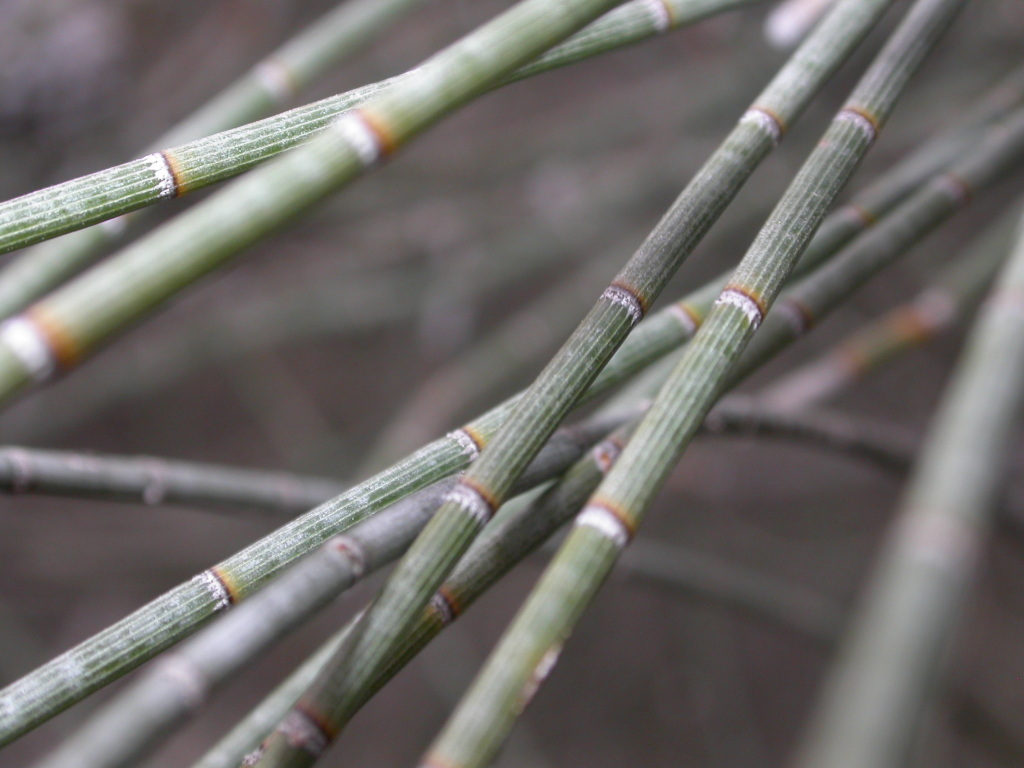Casuarina obesa
Miq. Swamp SheoakFreely root-suckering and able to form extensive copses. Trees to c. 15 m high. Branchlets drooping or spreading, to 21 cm long; internodes 8–20 mm long, c. 1 mm diam., smooth, usually waxy; ribs flat or slightly rounded. Teeth 12–16, erect on new shoots, then occasionally spreading slightly, but soon breaking off. Male spikes 1.5–6 cm long, 7–10 whorls per cm. Cones sessile or on peduncle to 10 mm long, cylindric; cone body 10–22 mm long, 8–12 mm diam. Winged seeds 3–5 mm long. Flowers seldom seen.
MuM, Wim, GleP, VRiv, RobP, OtP, CVU. WA, NSW (where now possibly extinct). Known only from the edge of the Karadoc Swamp near Red Cliffs, and from scattered localities in the Kiata-Warracknabeal-Mt Arapiles area. Grows in occasionally flooded, sometimes brackish or saline areas.
The cones of C. obesa tend to be less broad than those of C. pauper, and the valves are generally less pointed and thinner, but such distinctions are not always clear in Victorian material. Plants with viral or fungal infections may be grossly distorted: e.g. material has been observed with branchlets to 2 mm diam., teeth numbering more than 20, and fruits to 30 mm long and 19 mm diam.
Populations of C. obesa from Karadoc Swamp seldom produce cones, and the trees are apparently suffering from the increased salinity of water entering the swamp.
Entwisle, T.J. (1996). Casuarinaceae. In: Walsh, N.G.; Entwisle, T.J., Flora of Victoria Vol. 3, Dicotyledons Winteraceae to Myrtaceae, pp. 90–101. Inkata Press, Melbourne.
 Spinning
Spinning


